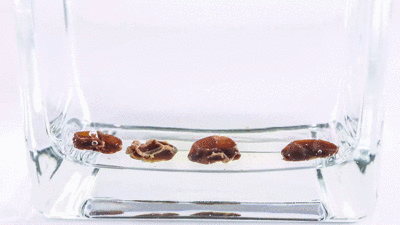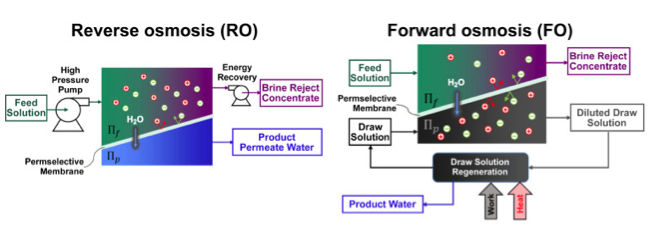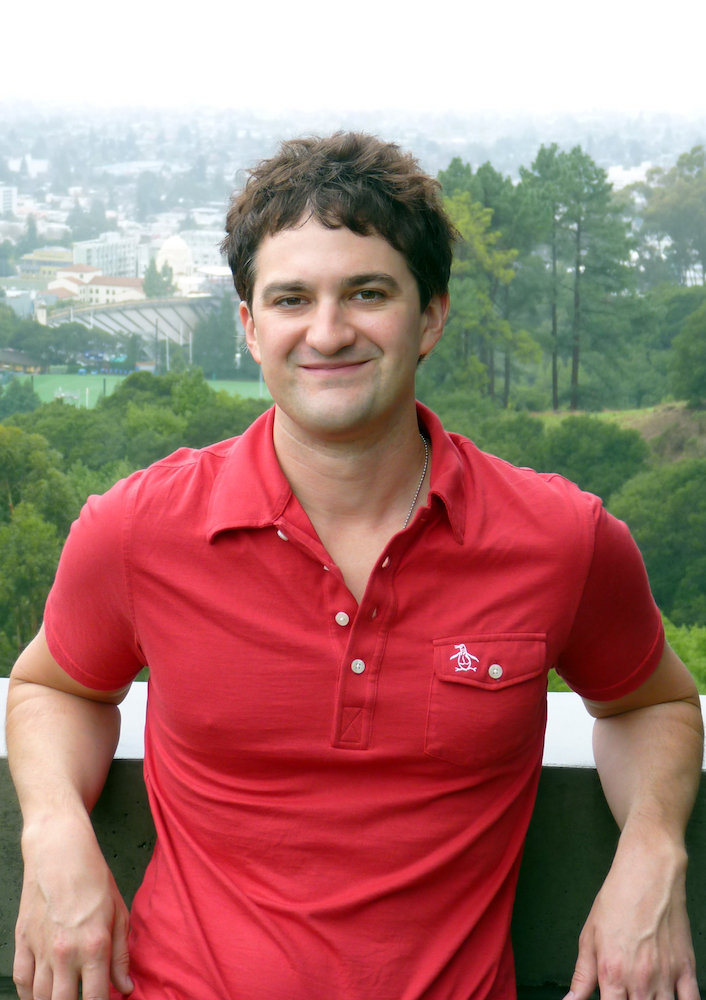As global populations grow and water scarcity becomes an increasingly pressing issue, the number of desalination plants is growing. There are now more than 20,000 worldwide, and more than 300 million people around the world rely on desalination for some or all of their daily water needs, according to the International Desalination Association.
However, the dominant technology for seawater desalination – reverse osmosis – is now over 50 years old and has its drawbacks. Scientific innovation in this field is urgently needed to bring down the costs and energy intensity of treating water.
Scientists at Berkeley Lab have been exploring different approaches for efficiently separating out salt and other contaminants to generate water that’s fit for drinking or other uses, such as agricultural irrigation. For example, they’re looking at charge-based brackish water desalination, nanoconfinement of water, better membranes, and other advanced water treatment techniques.
Another desalination technology that has shown great promise is forward osmosis – it requires far less energy then reverse osmosis, but there are still barriers to wider adoption. Jeff Urban, a staff scientist who specializes in new materials for energy storage and conversion at Berkeley Lab’s Molecular Foundry, a Department of Energy nanoscience research facility, explains what forward osmosis is and how Berkeley Lab is addressing the challenges.
Q. How is forward osmosis different from reverse osmosis?
A. Reverse osmosis and forward osmosis are, of course, different versions of the more general scientific principle of osmosis. In osmosis, water moves across a membrane from a region of low solute concentration into high solute concentration. This may seem complex, but we can develop a good intuition for it using the humble raisin.
If you put a raisin into water and wait a few hours, it will plump up considerably and become larger and heavier – this is a manifestation of forward osmosis. The raisin is very concentrated in sugars, and its skin is a semipermeable membrane that allows water to pass but not sugar (sugar molecules are much larger than water molecules). Thus, over time, water passes from the region of low concentration of solute (the bulk water) into the region of high concentration of solute (inside the raisin). This, essentially, is forward osmosis.

Rehydrating raisins is a manifestation of forward osmosis, an emerging technology for desalination. (Credit: Marilyn Chung/Berkeley Lab)
Reverse osmosis is literally the reverse of this process. One could apply a pressure to the plump raisin, or even a grape (carefully), and “push out” the water molecules from the region of high-solute concentration (inside the raisin) into the region of low solute concentration (the bulk water). This same principle is at work in the silica packets (do not eat!) that come with most packaged foods to keep them dry – they are highly concentrated in solute and draw the water in, thus preserving the food from unwanted moisture and rotting.
So, how does this connect to desalination at a larger scale? One of the most readily available sources of nonpotable water is the ocean. However, it is salty – ocean water is made up of roughly 3% salt. Reverse osmosis is by far the champion technology in desalination of ocean waters. As per our raisin analogy, it takes salt water and applies a large pressure to a chamber of salt water with a semipermeable membrane optimized for the size of water. As pressure is applied, water flows through the membrane and is collected on the other side – this water is nearly free of salt and can be further treated to be drinkable.

Reverse osmosis uses high pressure to separate salt from water, whereas forward osmosis relies on a draw solution to draw water out of a mixture. (Credit: Jeff Urban,“Emerging Scientific and Engineering Opportunities within the Water-Energy Nexus,” Joule, Vol. 1, Issue 4)
Forward osmosis is the reverse of this process; however, for desalination it’s a bit more complex than the example with the raisin. We can use the spontaneous movement of water across a membrane into a more concentrated solution to our advantage. Salt can be very hard to remove from water, however, water can be easier to remove from a different high concentration solution.
Forward osmosis for desalination exploits this by using a very concentrated “draw” solution to pull the water out of seawater. Again, as with the raisin, this initial flow of water into the draw solvent does not require much energy and can happen spontaneously. Then one performs a simpler separation to isolate the water from the draw solution, yielding desalinated water and the same draw solution to use again in a cyclic process. At Berkeley Lab we have developed draw solutions that pull out water effectively and spontaneously separate from water with application of low amounts of heat.
Q. What advantages does forward osmosis have over reverse osmosis?
A. Reverse osmosis (RO) is an established technology but is not without limitations. Due to the high pressures involved, significant amounts of electrical energy are required to operate the process. In addition, materials in the water can foul or scale on the membranes over time which is costly. This is only exacerbated at higher salt concentrations or for more contaminated waters.
Forward osmosis (or FO) can play a complementary role in treatment of brackish and higher salinity water and produced waters (from oil and gas operations) as it does not suffer from any intrinsic osmotic pressure limitations. It can also be more tolerant of contaminants that would otherwise foul the membranes used in RO under the large pressures applied. Thus, FO with draw recovery (meaning the draw solution is recycled) can work in places where RO alone cannot – producing high purity water streams for communities that don’t have access to seawater or the electrical supply required to operate RO. It is also gaining increased prominence in wastewater treatment, water reuse, food processing (liquid concentrates), and many other areas.
What’s more, FO with draw recovery can be driven by a diversity of energy sources, meaning it can be powered by renewable sources of electricity, such as wind or solar.
Q. What are the main scientific challenges in getting forward osmosis to work well, and why did Berkeley Lab choose to pursue this?
A. While forward osmosis is an extremely promising technology, work remains to be done. The impact of forward osmosis can be expanded if researchers are able to develop reliable, cost-effective draw solutes that surpass inorganic salts, systems that require minimal treatment after recovery, and systems-level approaches that are better able to integrate these technologies with renewable resources (solar, thermal). The inherent challenges of forward osmosis are really a multidisciplinary problem well suited to Berkeley Lab strengths – it touches virtually every discipline from chemistry to physics and materials to more engineering-like disciplines.
We are working on a team with Robert Kostecki and Ravi Prasher in Berkeley Lab’s Energy Technologies Area on several different aspects of forward osmosis – the design of the draw solute, system engineering, and the use of abundant natural resources such as solar or geothermal sources to achieve good results here. If successful, we would engage with even more of the Berkeley Lab scientific community to perform techno-economic modeling for project feasibility and analyses of the most appropriate geothermal and solar resources. Berkeley Lab is also a hub for global researchers, and the more global perspective on how to address the unique water challenges of different global communities is necessary for basic science to translate into global results.
The Department of Energy has recognized the very significant interdependence between water and energy and has announced it will invest $100 million for R&D in next-generation desalination technologies. We believe forward osmosis has the potential to greatly reduce the energy cost associated with desalinating all kinds of water.
Q. What advances has Berkeley Lab been able to make in getting forward osmosis closer to a competitive technology?
A. We are working on this problem from a number of angles, from basic science to the technoeconomics. One aspect that has recently seen progress is the development of draw solutions that can be recycled more cost- and energy-effectively. In a study we published earlier this year in ACS Omega, we proposed a binary ion liquid/hydrogel system. We found that this hydrogel allows for an efficient recovery of water from the draw solute/water mixture with enhanced water purity, compared with conventional thermal treating of lower critical solution temperature ionic liquid draw solute/water. Furthermore, hydrogels can be used in a continuous and readily recyclable process to recover water without heating the entire draw solute/water mixture. Our design principles open the door to use low-grade/waste heat or solar energy to regenerate draw agents and potentially reduce energy in the FO process considerably.
In another study published recently in Nature Communications Chemistry we used nuclear magnetic resonance spectroscopy to investigate the chemical structures of ionic liquids. One subclass of thermoresponsive ionic liquids have desirable properties that make them suitable as a draw solution for FO. This study will help us design more efficient draw solutions. (Read more here.)
As mentioned, forward osmosis is a nascent technology that can deliver substantial crosscutting impact in multiple areas with more investment into the basic science. The ability to use solar and renewable sources of technology to deliver clean water can take desalination “off the grid” and help water distressed communities worldwide.
# # #
Lawrence Berkeley National Laboratory addresses the world’s most urgent scientific challenges by advancing sustainable energy, protecting human health, creating new materials, and revealing the origin and fate of the universe. Founded in 1931, Berkeley Lab’s scientific expertise has been recognized with 13 Nobel Prizes. The University of California manages Berkeley Lab for the U.S. Department of Energy’s Office of Science. For more, visit www.lbl.gov.
DOE’s Office of Science is the single largest supporter of basic research in the physical sciences in the United States, and is working to address some of the most pressing challenges of our time. For more information, please visit http://energy.gov/science.

